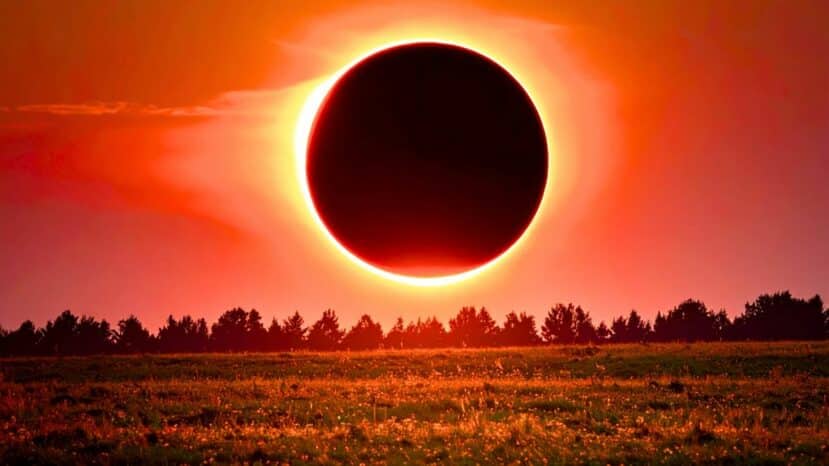Solar eclipse in France on August 12, 2026: up to 90% obscuration depending on region

France is gearing up for a rare event. A solar eclipse will be visible in France, with the spectacle expected late in the day and the Sun low on the horizon.
Date, visibility and regions concerned
Mark the date now: August 12, 2026. On this day, the solar eclipse will occur in the late afternoon, and will last until sunset, depending on the location. The phenomenon will be all the more striking the lower the star is. As a result, ambient light will drop significantly, especially at maximum.
The whole of mainland France will be affected, albeit unevenly. The South-West should benefit from greater obscuration, sometimes
In Paris and other major cities, the solar eclipse will be visible close to dusk. Precise times vary according to location, and will be confirmed by the observatories. Plan ahead, as the best viewpoints will fill up quickly. What’s more, choose an unobstructed area towards the setting sun.
“Never without certified protection, even if the Sun is low.”
What we’ll see by region
First, the Moon bites the edge of the Sun: this is the first contact. Then, the occulted portion increases to a local maximum. Sky tones become colder, while shadows harden. As a result, the atmosphere may be reminiscent of early twilight.
Further south and west, the maximum phase will be more marked. In the north and east, on the other hand, the decrease in light will be less marked, but still perceptible. Temperatures may also dip slightly. This solar eclipse, which is close to sunset, will also make for beautiful photos with an urban or natural foreground.
- Check your western horizon, free of buildings and trees.
- Arrive early to find a safe, stable framing.
- Bring certified eyewear and a weather plan B.
- Set up the camera before the phenomenon begins.
- Stay hydrated and dress warmly, as the wind may blow.
Visual safety and adapted equipment
Looking at the sun without proper protection is dangerous. Use filters marked ISO 12312-2, intact and not out-of-date. In addition, never combine optical devices and glasses without a filter dedicated to optics. A n°14 welder’s lens is fine, but nothing else.
Baader – AstroSolar eclipse glasses: these eclipse glasses are designed for solar observation. Their filters guarantee a sharp image and safe attenuation.
For binoculars, telescopes and lenses, place filters on the front only. Don’t make makeshift solutions, as the risk of injury is real. Also, keep an eye on children and take frequent breaks. A solar eclipse is never a reason to take risks.
Preparing your session and choosing your spotlight
Start by finding an accessible, clear spot to the west. Then consult a local weather report, as cloud cover changes rapidly. An alternative shot a few kilometers away can save the day. Carry glasses, tripod, battery and a cloth for the optics.
Goggles from a chemist or optician: solar filter glasses cost around €3 and are sufficient for naked-eye observation. Check for scratches, then adjust the frame for a stable fit.
Frequently asked questions and practical tips
What if the sky gets cloudy? Try pinhole projection: a simple card with a hole in it projects a luminous crescent onto a sheet of paper. Alternatively, a pocket mirror can be used to create a solar image on a shaded wall, albeit very carefully. This way, even in brief sunshine, you’ll still be able to enjoy the view.
Do I need a pro camera? No, but a tripod helps a lot. Reduce sensitivity and test several exposures. What’s more, a dedicated solar filter protects the sensor and reveals the crescent. A solar eclipse is best photographed with preparation and simplicity.
What are the next dates? On August 2, 2027, there will be another major solar eclipse, total in Spain and North Africa, and partial in France. Until then, practice framing the Sun low. Finally, take into account local schedules and traffic. Every minute will count on D-Day.





No comments
Post a comment
Always participate in accordance with the law and with respect for others.